Algae Overtake Australia’s Murray River
Bloom of blue-green algae covers hundreds of kilometers of water in New South Wales and Victoria.
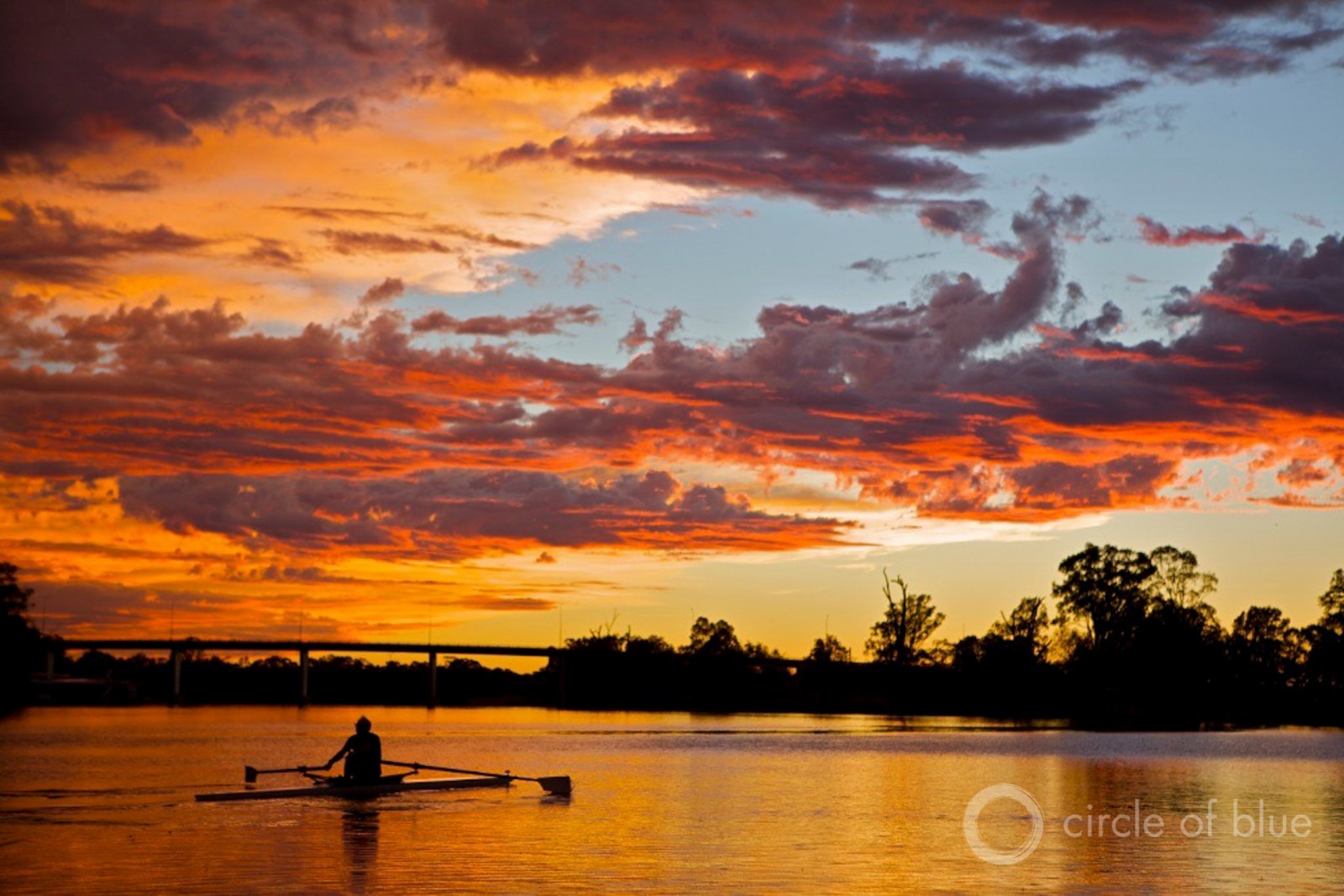
A rower in Mildura, Victoria enjoys a tranquil Murray River. Driven by heat and dry weather, a bloom of potentially toxic algae covers more than 500 kilometers of the river’s water this year. Photo © J. Carl Ganter / Circle of Blue
By Codi Kozacek
Circle of Blue
Scorching temperatures coupled with dry conditions brought on by the El Nino weather pattern have spawned a massive bloom of blue-green algae in the Murray River, Australia’s longest. The algae outbreak, expected to last through May, is also a warning signal for river systems that are being pumped full of nutrients and cooked by a heated planet.
Stretching along the river where it forms the border between the states of New South Wales and Victoria, the bloom covers more than 500 kilometers (310 miles) of the Murray’s main stem and its tributaries, including the Edward, Niemur, and Wakool rivers. The algae can be toxic, though samples sent to researchers so far show that the current bloom is not. Even so, officials have issued a red alert from Hume Dam in New South Wales to Murrabit in northern Victoria that warns swimmers and residents to avoid contact with the water and advises farmers to keep their livestock away from the river’s shores. Drinking water supplies are still safe, but communities have reported hits to tourism as vacationers avoid the river.
Heat and dryness teamed up with chronically high levels of phosphorus to trigger this year’s extensive bloom.
The algal outbreak, which has plagued the river system since the end of February, can largely be traced to a record-breaking summer heatwave. Both New South Wales and Victoria notched their highest ever average temperature for March, according to the Bureau of Meteorology. At the same time, less water was flowing into the Murray-Darling River Basin. Total rainfall across the basin was 43 percent below the long-term monthly average, making it the 35th driest March in 117 years of observations. It was perfect weather for blue-green algae, said Michele Burford, executive deputy director of the Australian Rivers Institute at Griffith University in Queensland.
“We’re in the middle of an El Nino pattern here, and all along the East Coast we have higher temperatures and less rainfall,” Burford told Circle of Blue. “The higher temperatures — algae love that. And less rainfall means you don’t have things flushing out of the river. It’s warm, it’s calm, and there’s not as much flow as in years when you’re getting more rainfall.”
The heat and dryness teamed up with chronically high levels of phosphorus to trigger this year’s extensive bloom, Burford said. Phosphorus and other nutrients are washed into the river from agricultural activities, sediments, and sewage.
It is not the first large bloom. A forest of blue-green algae sprouted in the Murray in 1983, 2009, and 2010, while the most severe bloom in recent memory struck the basin in 1991, choking 1,000 kilometers (620 miles) of the Darling River and prompting a state of emergency in New South Wales. The problem is not confined to the Murray-Darling Basin, either. Lakes and reservoirs across Australia are vulnerable to the blooms. Globally, blooms of blue-green algae have made the news in recent years when they shut down drinking water supplies for nearly half a million people in Toledo, Ohio in 2014, and for more than 2 million people living in Wuxi, China in 2007.
A New Twist On An Old Problem
What stands out about the current bloom in the Murray, however, is that the species of blue-green algae this year is different than what researchers normally see in the river. There exists a vast array of blue-green algae species, scientifically called cyanobacteria, and many produce toxins that are harmful both to ingest and to touch. Blooms have killed livestock, pets, and people in countries around the world; in Brazil, for instance, cyanobacterial toxins killed 76 people at a dialysis center in 1996. Unlike bacterial pathogens, however, the toxins cannot be rendered harmless by boiling the water, which only serves to concentrate them.
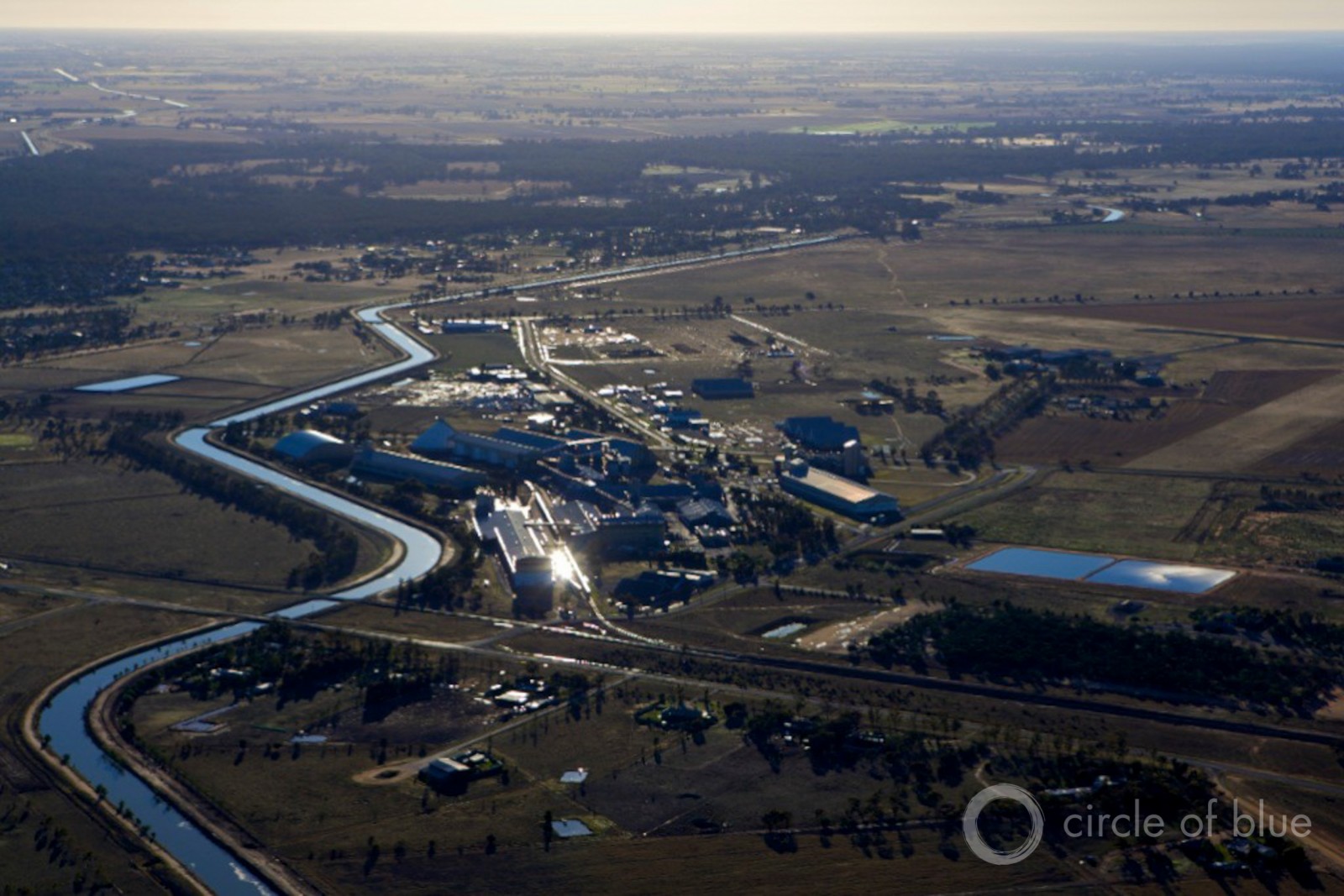
High levels of nutrients, coupled with the right weather conditions, can lead to massive blooms of algae in the Murray River system. Here, a tributary to the Murray in Deniliquin, New South Wales. Photo © J. Carl Ganter / Circle of Blue
So far, samples of the Murray bloom sent to the Australian Rivers Institute have not shown toxins, Burford said. Even so, the dying algae suck the oxygen out of the water, which causes fish to gasp and choke. “The blooms can be a problem even if they are not toxic,” Burford noted.
The species of algae blooming in the Murray now, as well as other species of blue-green algae, could thrive under the hotter and drier conditions expected to prevail in Australia under climate change. In this scenario water temperatures will not only rise, but also become stratified. That means warmer water will sit on top while cooler water will sink to the bottom of a lake or reservoir.
The blue-green algae are particularly buoyant and can float to the warm layer of water at the top, allowing them to outcompete other species of algae that get stuck in deeper, darker, and colder water.
“It’s a double whammy from higher temperatures,” Burford said.
Managing Future Blooms
Once a bloom is established over such a wide area, there is little that water managers can do to disperse it.
“Due to the extent of the bloom and environmental considerations, potential management options, such as algaecide use, are not feasible,” according to a statement from a spokesperson for the Department of Primary Industries Water division in New South Wales, which replaced the state’s Office of Water last year.
Calls for the state to release water from Hume Dam to flush out the bloom have been considered, but the reservoir behind the dam is also contaminated with blue-green algae and “there has been insufficient scope to increase flow volumes,” the statement said.
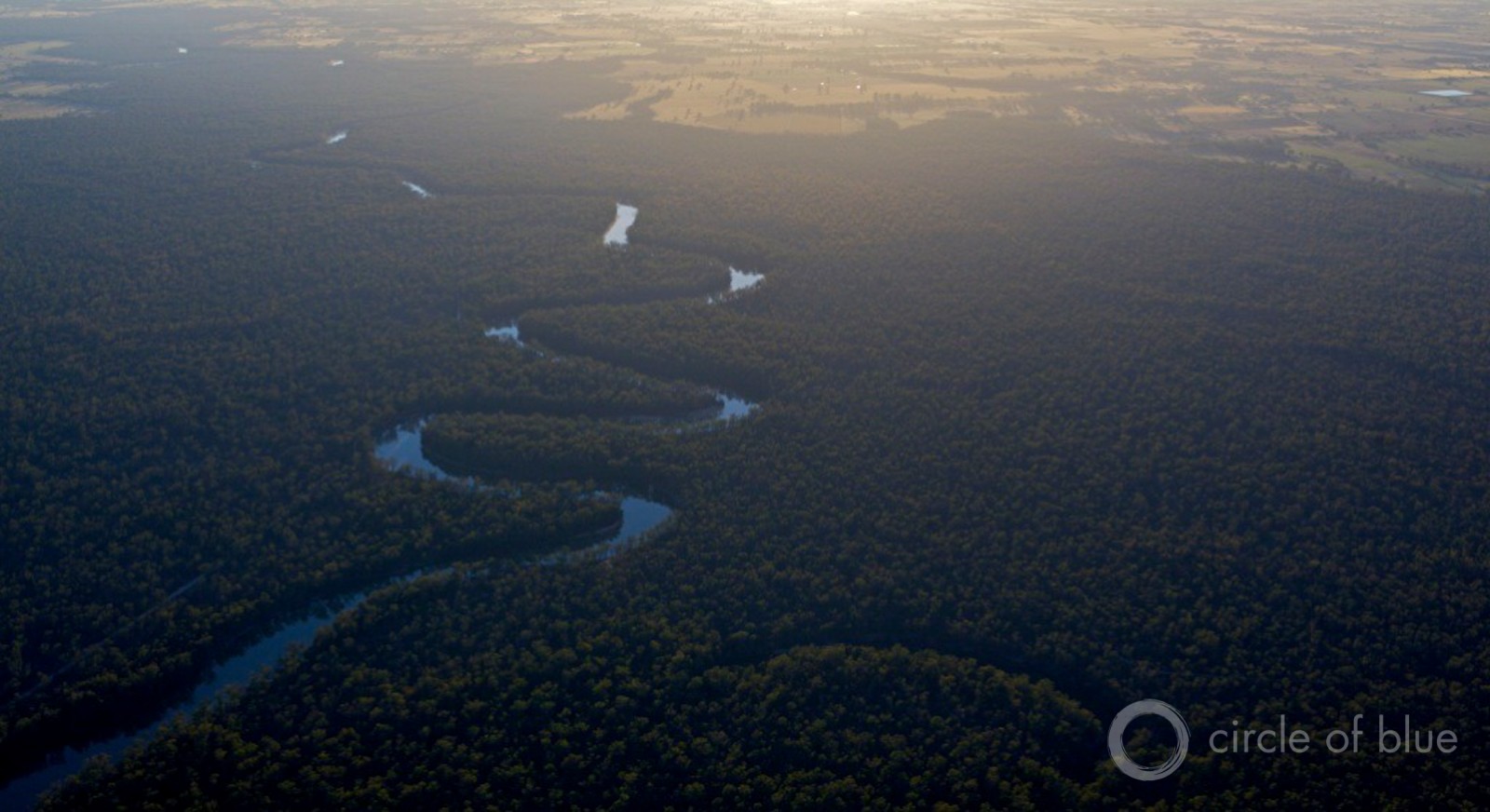
Australia’s sprawling Murray-Darling River Basin has experienced large blooms of algae in the past. Three severe blooms have occurred since 2009. Photo © J. Carl Ganter / Circle of Blue
Instead, DPI Water continues to monitor the bloom and is educating the public about how to avoid blue-green algae risks. It said that local water utilities have been able to successfully treat contaminated water, so drinking water supplies are unaffected. While the duration of the bloom depends on the weather, government officials said in March it could last until May.
Minimizing future blooms of blue-green algae will require reductions in the nutrients that feed them, according to Burford. That could mean efforts to improve farming practices by limiting fertilizer applications, fencing off rivers so cattle can’t erode their banks, and planting more vegetation to trap nutrients before they reach waterways.
Minimizing future blooms of blue-green algae will require reductions in the nutrients that feed them.
The challenge is financing these improvements, which can be costly for individual landowners. One way could be the implementation of nutrient off-setting programs, where downstream cities, instead of treating the water after it is polluted, pay farmers upstream to reduce nutrient runoff. But that requires new thinking and new analytical tools, too.
“The nutrient off-setting idea is really gaining traction in Australia,” Burford said. “There’s always that feeling that when an engineer builds something, we know what we’re getting. It’s a bit more challenging when you go up into a [river] catchment and say we need a 10 to 20 percent reduction. There’s still some work to do on the science, but people are acknowledging that that might be a way to pay for it.”
A news correspondent for Circle of Blue based out of Hawaii. She writes The Stream, Circle of Blue’s daily digest of international water news trends. Her interests include food security, ecology and the Great Lakes.
Contact Codi Kozacek

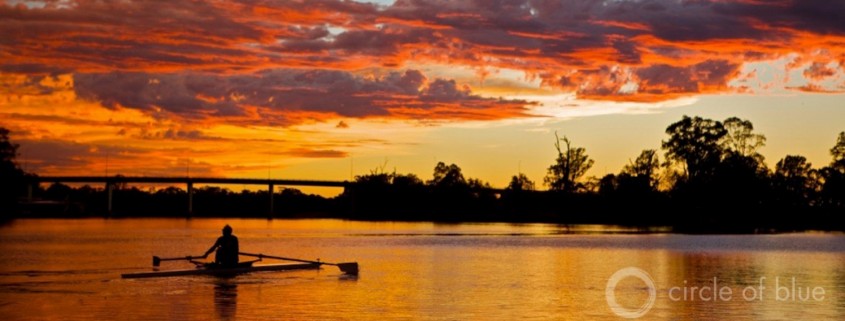

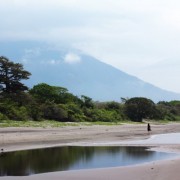
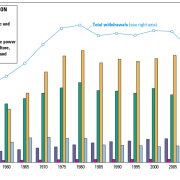



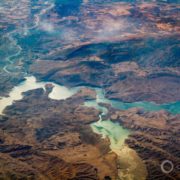



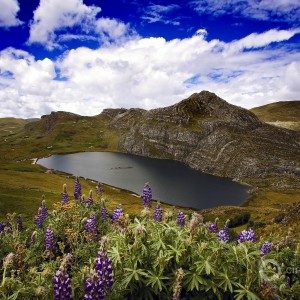
Leave a Reply
Want to join the discussion?Feel free to contribute!